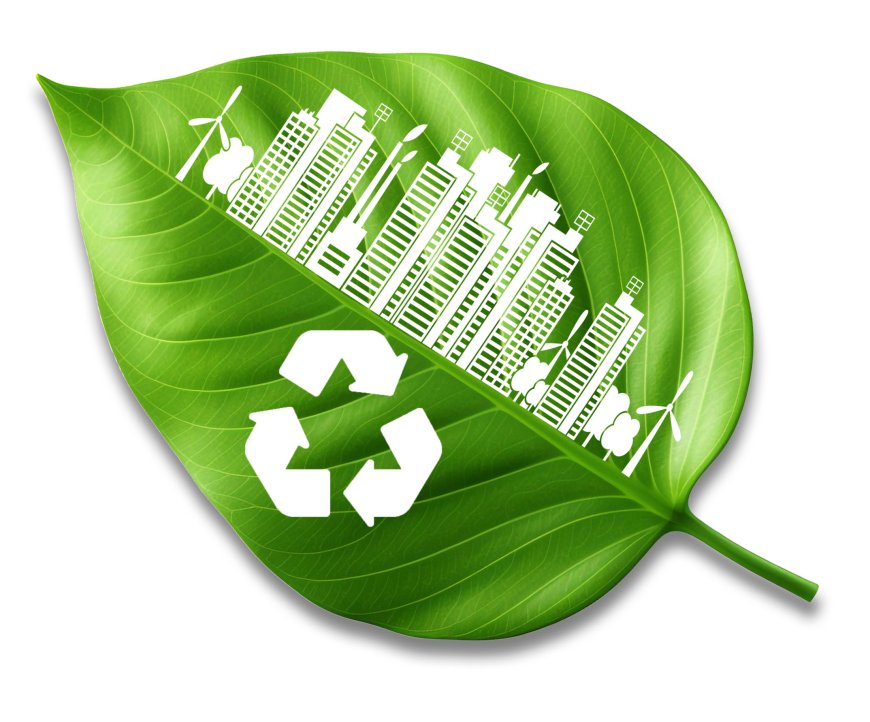HARNESSING WASTE FOR SUSTAINABLE CONSTRUCTION
With the growing construction activities, there is a dearth of construction aggregates as the natural resources for aggregates are depleting. It is time to harness the accumulating municipal solid waste, construction & demolition waste, and other waste materials in meeting the growing demand-supply gap of construction aggregates in future. Construction Times explores the way forward.

With the growing construction activities, there is a dearth of construction aggregates as the natural resources for aggregates are depleting. It is time to harness the accumulating municipal solid waste, construction & demolition waste, and other waste materials in meeting the growing demand-supply gap of construction aggregates in future. Construction Times explores the way forward.
India's construction sector is poised for substantial growth with the enormous developments planned for the coming years to meet the needs of infrastructure and real estate sectors. India is witnessing unprecedented growth in urban population with an estimated 50 per cent of India living in urban areas by 2046. This has boosted the construction sector with a lot of urban infrastructure development activities underway and in the pipeline. This will also see a lot of redevelopment activities by demolishing old structures for new ones. The growing urban population is also generating a lot of urban waste which is overburdening the municipal waste management system.
the gap.
MSW – from liability to resource
 The rapid urbanization and infrastructure development in India pose significant challenges to environmental sustainability, primarily through the generation of municipal solid waste (MSW). As urban areas expand, the volume of waste produced increases dramatically, creating a pressing need for effective waste management strategies. Jose Jacob Kallarakal, Chairman & MD, Antony Waste Handling Cell Ltd, elaborates, “Urbanization has led to a substantial rise in waste generation, with estimates indicating that urban India produces between 1,30,000 to 1,50,000 metric tonnes of MSW daily, projected to reach 165 million tonnes by 2030. This surge not only overwhelms existing waste management systems but also exacerbates pollution and environmental degradation.”
The rapid urbanization and infrastructure development in India pose significant challenges to environmental sustainability, primarily through the generation of municipal solid waste (MSW). As urban areas expand, the volume of waste produced increases dramatically, creating a pressing need for effective waste management strategies. Jose Jacob Kallarakal, Chairman & MD, Antony Waste Handling Cell Ltd, elaborates, “Urbanization has led to a substantial rise in waste generation, with estimates indicating that urban India produces between 1,30,000 to 1,50,000 metric tonnes of MSW daily, projected to reach 165 million tonnes by 2030. This surge not only overwhelms existing waste management systems but also exacerbates pollution and environmental degradation.”
C&D waste – aggregates reborn
 According to Abhijeet Gawde, Head of Business Development & Marketing, Construction, a part of Godrej Enterprises Group, effective management of C&D waste is essential for sustainable infrastructural growth globally. Most of the C&D waste comprises debris from the demolition of old buildings, roads, bridges, and other structures. C&D waste presents a resourceful opportunity, with nearly 70% of waste potentially recoverable using appropriate methods and guidelines during demolition activities. Concrete, bricks, blocks, and other fine materials form a significant portion of the overall C&D waste generated.
According to Abhijeet Gawde, Head of Business Development & Marketing, Construction, a part of Godrej Enterprises Group, effective management of C&D waste is essential for sustainable infrastructural growth globally. Most of the C&D waste comprises debris from the demolition of old buildings, roads, bridges, and other structures. C&D waste presents a resourceful opportunity, with nearly 70% of waste potentially recoverable using appropriate methods and guidelines during demolition activities. Concrete, bricks, blocks, and other fine materials form a significant portion of the overall C&D waste generated.
 Recycling of C&D waste plays an important role in preserving the environment. It reduces the amount of debris dumped in landfills. By processing and reusing materials, recycling minimizes the amount of dust, toxins, and pollutants released into the environment. Recycling reduces the need for new raw materials, thereby protecting natural ecosystems. Recycling reduces energy consumption by repurposing existing materials, leading to lower greenhouse gas emissions. Recycling C&D waste creates new business opportunities in waste management, material recovery, and green construction. “Recycled materials such as reclaimed wood, crushed concrete, and reused steel are often cheaper than new materials. This lowers the overall cost of construction, making buildings more affordable and encouraging sustainable development in urban areas. Infrastructure projects need to set up their own recycling facilities. “Recycling C&D waste presents a sustainable solution, offering economic, environmental, and social benefits. By adopting efficient waste management policies, investing in recycling infrastructure, and promoting awareness, India can mitigate the environmental damage caused by construction waste and move towards a greener, more sustainable urban future,” highlights Ajit Kumar Jain, IAS (retd), Chairman and Managing Director, ERAF Environment Research Foundation.
Recycling of C&D waste plays an important role in preserving the environment. It reduces the amount of debris dumped in landfills. By processing and reusing materials, recycling minimizes the amount of dust, toxins, and pollutants released into the environment. Recycling reduces the need for new raw materials, thereby protecting natural ecosystems. Recycling reduces energy consumption by repurposing existing materials, leading to lower greenhouse gas emissions. Recycling C&D waste creates new business opportunities in waste management, material recovery, and green construction. “Recycled materials such as reclaimed wood, crushed concrete, and reused steel are often cheaper than new materials. This lowers the overall cost of construction, making buildings more affordable and encouraging sustainable development in urban areas. Infrastructure projects need to set up their own recycling facilities. “Recycling C&D waste presents a sustainable solution, offering economic, environmental, and social benefits. By adopting efficient waste management policies, investing in recycling infrastructure, and promoting awareness, India can mitigate the environmental damage caused by construction waste and move towards a greener, more sustainable urban future,” highlights Ajit Kumar Jain, IAS (retd), Chairman and Managing Director, ERAF Environment Research Foundation.
 According to Dr. Prashant P. Bhave, Professor (Adjunct) & Retd. Professor (Asso.) & Head, Environmental Engg, VJTI, Mumbai, C&D waste management should emerge as a model for SWM by the ULBs as waste generator and need citizen-friendly approach for collection, transportation and treatment or environment-friendly management.
According to Dr. Prashant P. Bhave, Professor (Adjunct) & Retd. Professor (Asso.) & Head, Environmental Engg, VJTI, Mumbai, C&D waste management should emerge as a model for SWM by the ULBs as waste generator and need citizen-friendly approach for collection, transportation and treatment or environment-friendly management.
No more waste
 “The shift of road construction industry towards circular economy principles emphasizes cleaner and resource-efficient technologies, chiefly to balance resource extraction and waste generation,” comments Krishna Prapoorna Biligiri, Professor, Department of Civil & Environmental Engineering, Indian Institute of Technology (IIT) Tirupati.
“The shift of road construction industry towards circular economy principles emphasizes cleaner and resource-efficient technologies, chiefly to balance resource extraction and waste generation,” comments Krishna Prapoorna Biligiri, Professor, Department of Civil & Environmental Engineering, Indian Institute of Technology (IIT) Tirupati.
A sustainable Indian construction industry involves a comprehensive shift towards circular economy practices. By integrating recycled materials into construction processes, the industry can significantly reduce its carbon footprints. Collaborations between public and private players, coupled with imparting awareness on the use of properly recycled materials in construction will go a long way for a sustainable construction industry in India.







